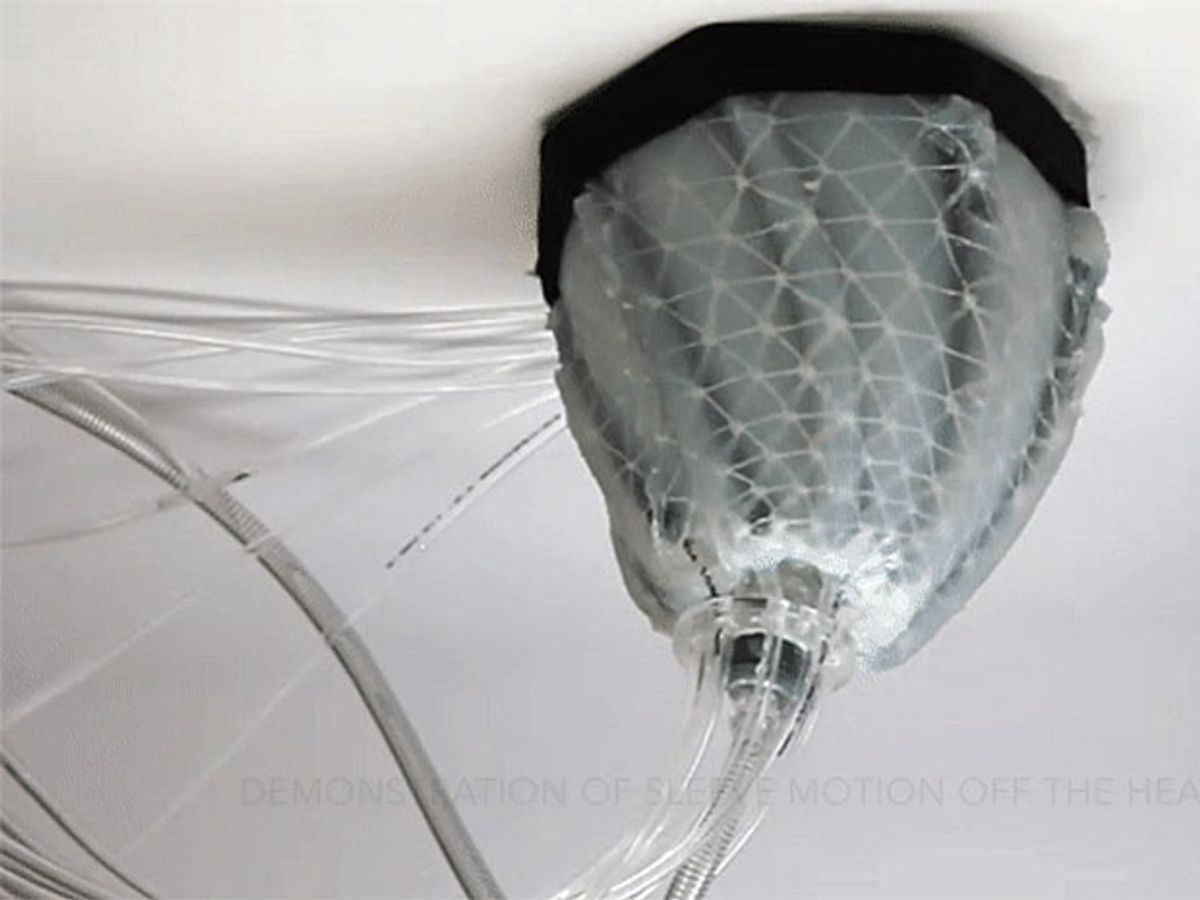An engineer, a cardiac surgeon, and a graduate student walk into a bar. Three years later, they emerge with a funnel-shaped robot that enfolds the mammalian heart, then actively compresses and twists it to restore normal blood flow after heart failure.
Okay, so that’s not how it actually happened, but the robot is real. Today, a team of researchers at Harvard University and Boston Children’s Hospital, among other participating institutions, published details on an implantable, soft-robotic device that could help failing hearts pump blood without ever touching the blood.
The work, including a proof-of-concept experiment with live pigs, was published this week in Science Translational Medicine.
Traditional ventricular assist devices (VADs) are used to bypass a failing heart. They remove blood from the heart, then pump it back into the aorta or pulmonary artery for distribution around the body. Inside VADs, blood touches artificial surfaces—tubes, pumps, and so forth—increasing the risk of blood clots. Therefore, patients on VADs must take blood thinners, medications that require careful monitoring, often for the rest of their lives.
So in early 2012, when Harvard graduate student Ellen Roche and her advisor Conor Walsh of the Harvard Biodesign Lab met with cardiac surgeon Frank Pigula, then at Boston Children’s Hospital, Pigula described the need for an assistive device for heart failure patients that doesn’t contact blood at all.
“We put our heads together, and thought maybe this is a good application of soft robotics,” says Roche, now a postdoctoral research fellow at the National University of Ireland, in Galway. Soft robotics, made of flexible materials, are lightweight, conformable, and able to achieve complex motions—such as the twisting, compressing dynamics of the heart.
Over three years, the researchers went through several iterations of a robot to “hug” the heart. The cylindrical device, constructed of silicon less than a millimeter thick, is layered with actuators that form rings around a sleeve and a helical spiral from top to bottom. These mechanical rings are tubes that inflate and contract when filled with pressurized air. This enables the robot—unlike other heart sleeves—to perform a variety movements on demand, even contracting one side of the heart at a time.
“Even as a patient’s disease condition changes, you could modify the level of assistance” provided by the sleeve, says Roche.
After testing the sleeve on a synthetic heart and pig cadavers, the team performed a proof-of-concept study with live pigs induced with heart failure using a drug that slows the heart. When attached to the failing heart, the device successfully restored blood flow back to baseline levels. While the pig model demonstrates feasibility, longer-term studies will need to be done before moving the robot into human trials.
The team is also studying how to reduce inflammation on the heart’s surface. In this study, they tested a hydrogel developed in the lab of David Mooney at Harvard, Roche’s Ph.D. coadvisor and paper coauthor. The gel acted as a protective layer between the sleeve and heart and showed some potential to reduce inflammation.
The device also requires pressurized air, but Roche imagines that one could store a compressed air supply in, say, a backpack, to make the system portable. This fall, Roche will return to Boston to take up a post at MIT, where she plans to extend the work and seek funding for longer-term animal studies.
The ultimate goal, adds Roche, would be to create a sleeve that not only helps while a patient awaits transplant but also reduces the load on the heart long enough to give it time to heal. “This is hypothetical, but maybe you could eventually reduce the assistance or turn the device completely off,” says Roche. “But I’m not claiming we’re anywhere near that.”
Megan Scudellari is an award-winning freelance journalist based in Boston, Massachusetts, specializing in the life sciences and biotechnology. She was previously a health columnist for the Boston Globe and has contributed to Newsweek, Scientific American, and Nature, among others. She is the co-author of a college biology textbook, “Biology Now,” published by W.W. Norton. Megan received an M.S. from the Graduate Program in Science Writing at the Massachusetts Institute of Technology, a B.A. at Boston College, and worked as an educator at the Museum of Science, Boston.



